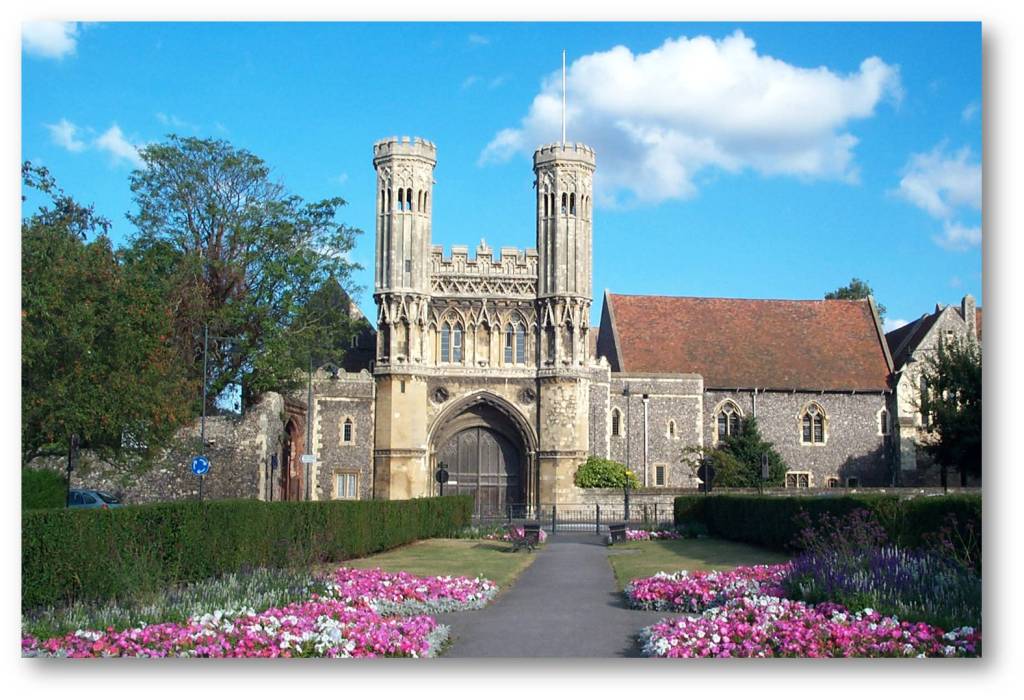Even after a good night’s sleep, our hotel in the Cliftonville area of Margate didn’t look any better – and our companions at the breakfast table hadn’t improved overnight either, with the non-stop talker giving us all the gruesome details of all her ailments – and there were plenty! – followed by a lecture on how dirty it was to have a bath.

Luckily the food was good and so Mum and Granny Betty concentrated on eating and let her words float past them, before making their excuses to leave the table as soon as they could to go get ready for their visit to Canterbury.
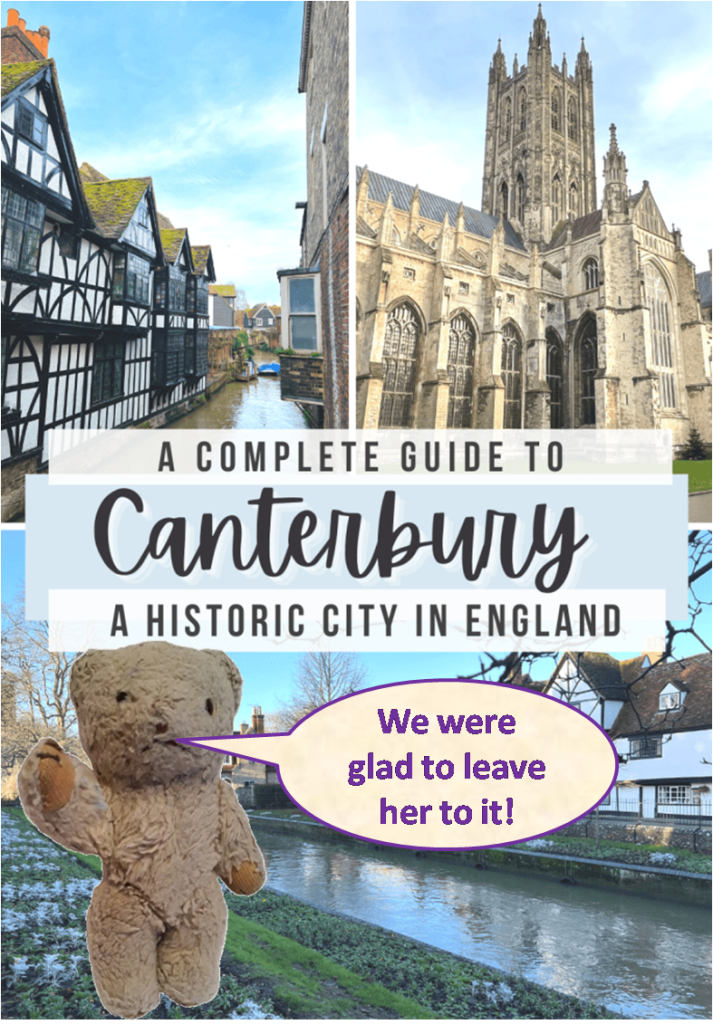
As Canterbury was only about 20 miles/32 kms away from Margate, it didn’t take long to get there and soon the coach was parking up not far from the ruins of St Augustine’s Abbey on the edge of the town centre.




Although it looked interesting, unfortunately we didn’t have time to go look round as we wanted to visit the cathedral most of all. But, as I was only a Very Young Little Bear back then and hadn’t learned very much history up to that point, Mum said she’d tell me a bit about the abbey – and about St Augustine himself – as that would help me to understand more about Canterbury and its important place in the Church of England.
She started by telling me that Augustine was probably born in Italy in the 6th century AD. He was a religious man and by 595 he was living in Rome where he was the prior of a monastery and was known to the pope, Gregory I (who was also called Gregory the Great).
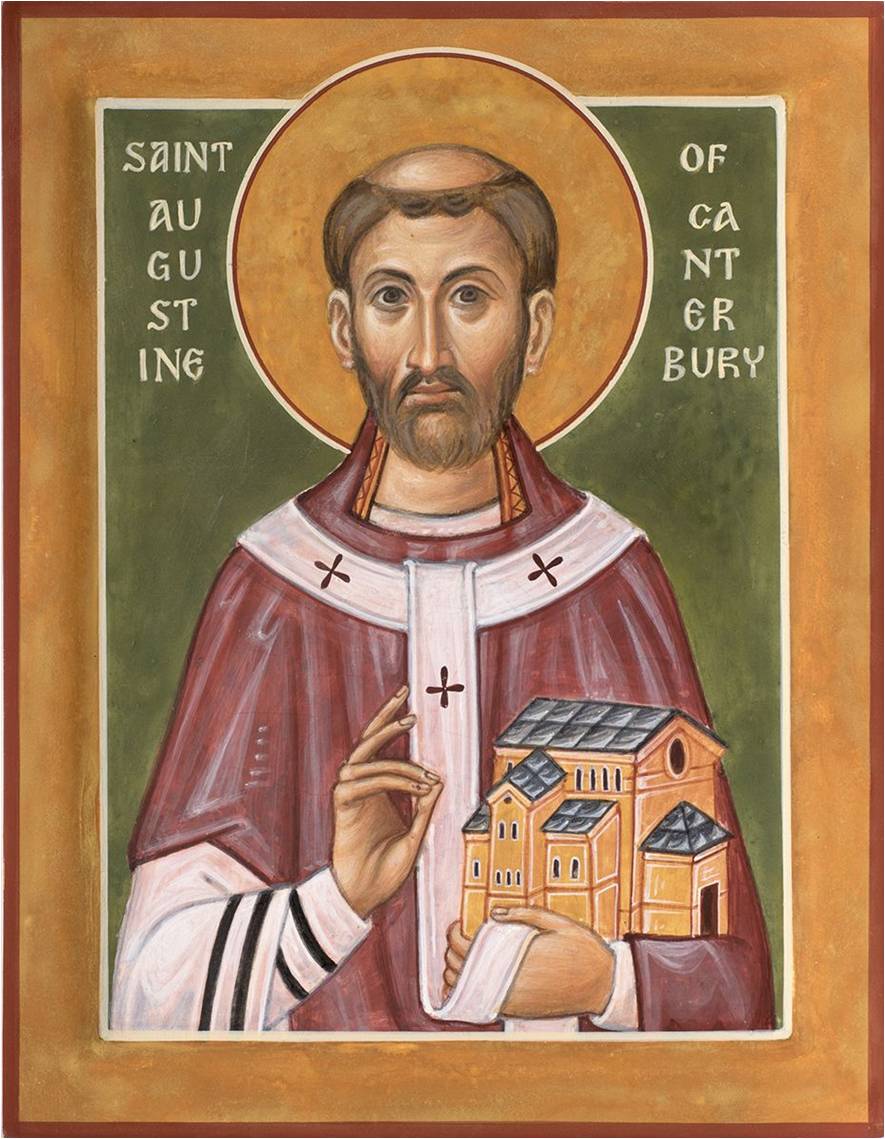

This was almost 200 years after the Roman legions had left Britain to fend for itself against the Angles and Saxons who were moving there from mainland Europe and reintroducing pagan beliefs in the areas where they settled. (This was mainly in the south and east of what is now England, while much of the north and west – including Ireland, Scotland and Wales – remained Christian, but stayed independent of the church in Rome.)

Trade with the old Roman empire had continued, however, and this included the buying and selling of slaves in an open-air market in Rome.




Now, according to legend, Pope Gregory was walking past one day when he noticed some of the slaves being sold had blond hair and blue eyes. He was fascinated by them and asked who they were and where had they come from. Then, being told that they were Angles, he is said to have replied, “They’re not Angles, but Angels.”




Pope Gregory then found out that they weren’t Christians and so he appointed Augustine to lead a mission to convert them.Canterbury in Kent was chosen as their starting point. This was probably because, although Ethelbert, king of Kent, wasn’t a Christian, his wife Bertha, daughter of the king of Paris, was.
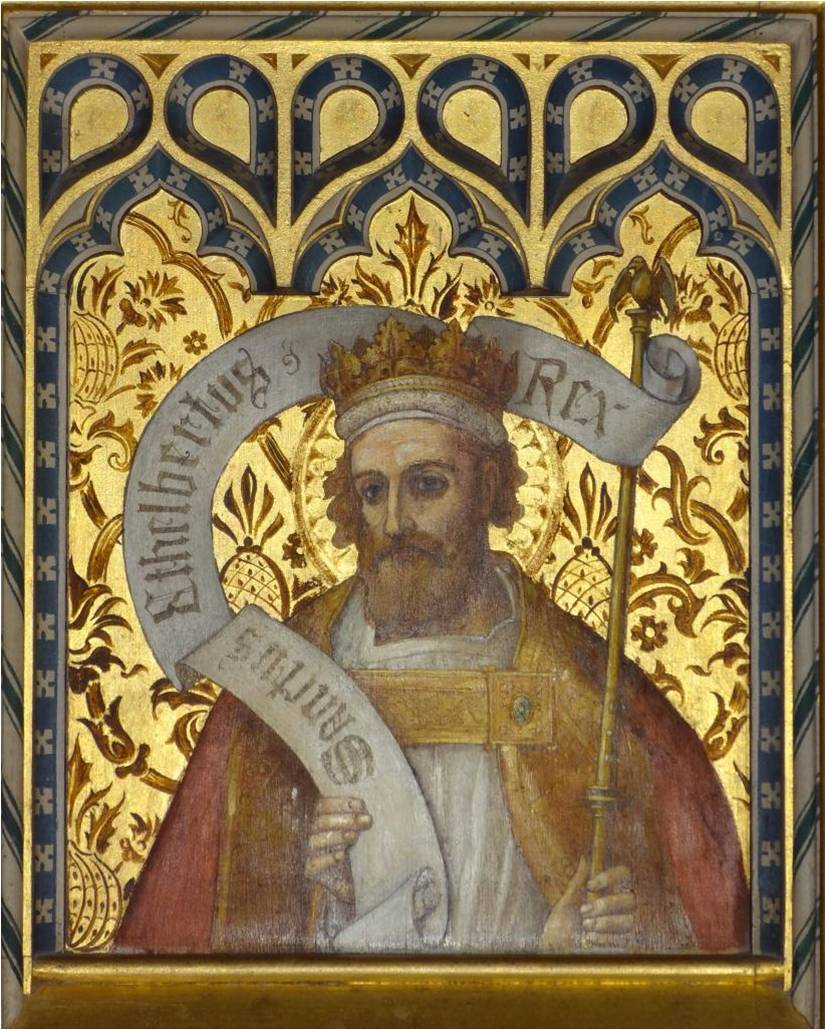



When Augustine and his band of missionaries arrived in Ethelbert’s capital in 597, they were made welcome and Ethelbert handed them his pagan temple and its lands – just outside the old Roman walls of the city – to build themselves a church and somewhere to live. The church was started that year and its remains can still be seen within St Augustine’s Abbey.
By the time Mum had finished telling me all this, we had reached the beautiful Christ Church Gateway, which is the main entrance to the cathedral precincts.
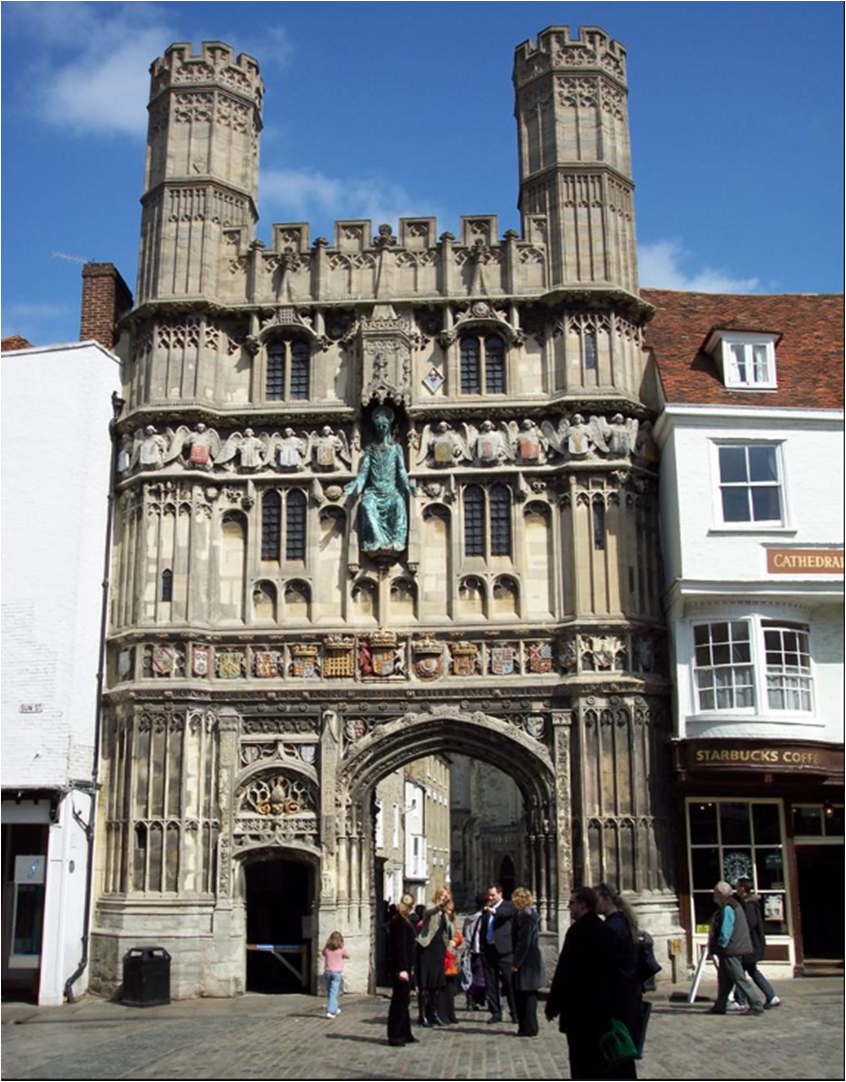
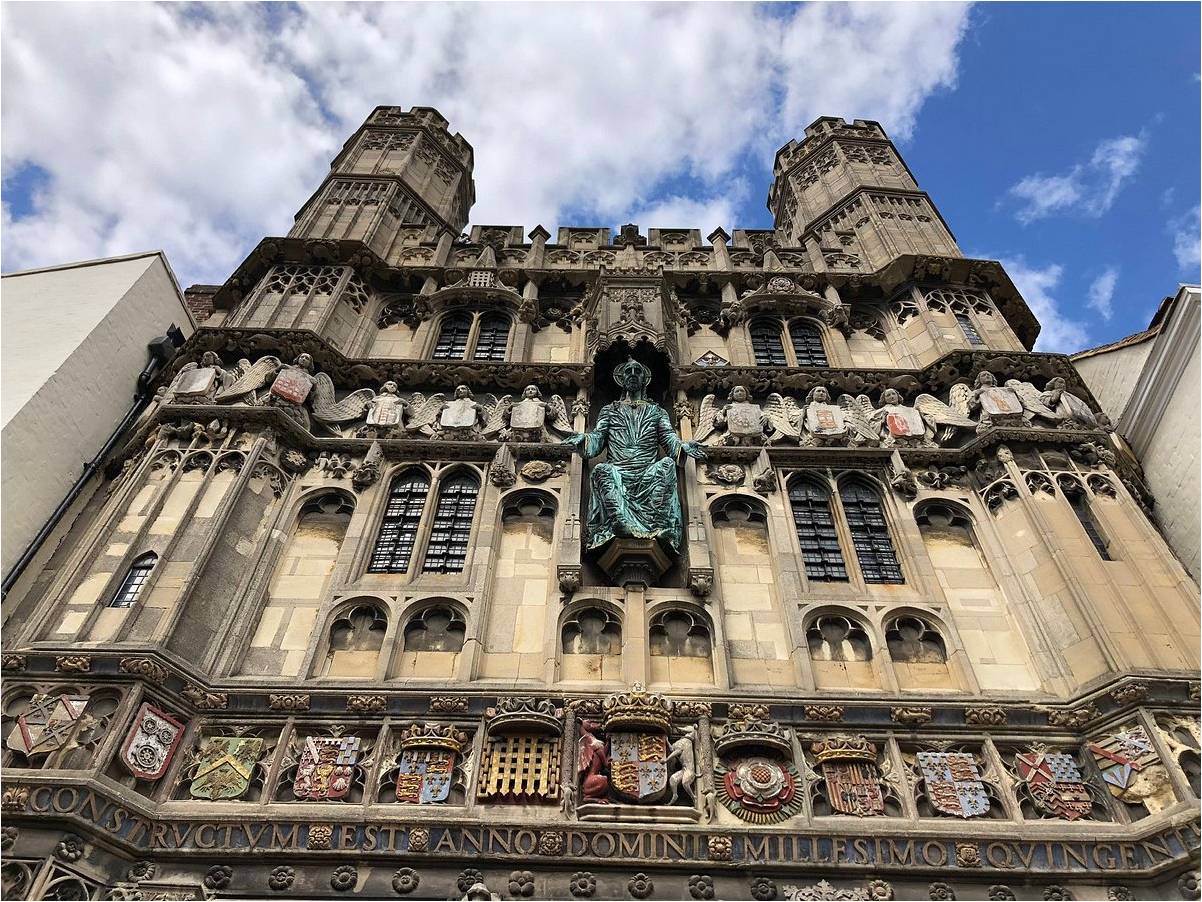
It was started in 1502 to celebrate the marriage of Arthur, Prince of Wales and eldest son of Henry VII, to Catherine of Aragon, daughter of Ferdinand II of Aragon and his wife Isabella I of Castile. Unfortunately Arthur died just a few months after the wedding and another 20 years passed before the gate was finished – by which time Catherine had married Arthur’s younger brother Henry and still became Queen of England in 1509 when Henry came to the throne as Henry VIII.



At the time the gateway was built, it was part of a Benedictine monastery, known as Christ Church Canterbury, the site of which also included the cathedral, which was also known as Christ Church.
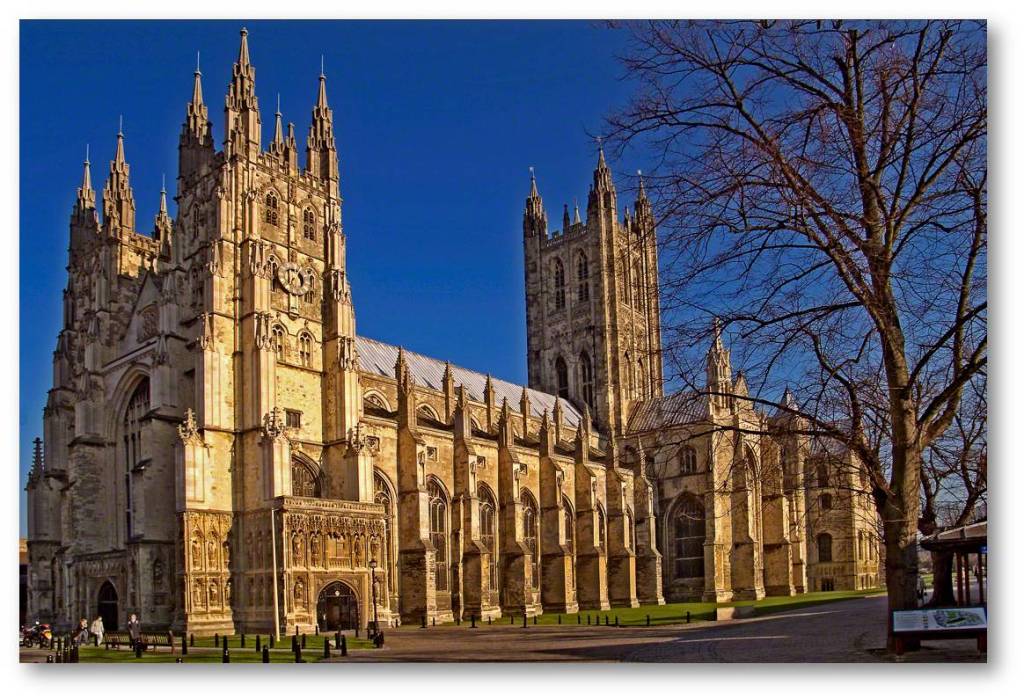
Now, together with St Augustine’s Abbey and St Martin’s Church (where Queen Bertha worshipped before St Augustine arrived in Canterbury), the cathedral is a UNESCO World Heritage site.
Mum says I’ve written enough for this week, however, so I’ll have to finish telling you about it in my next post. Meanwhile, take care, stay safe – and look out for more tales from me soon!
Follow my next blog: 259. MY MUM THE STORY-TELLER – PART ONE HUNDRED AND THIRTY-FIVE
18/05/2023


